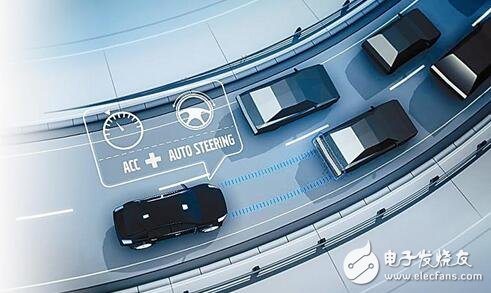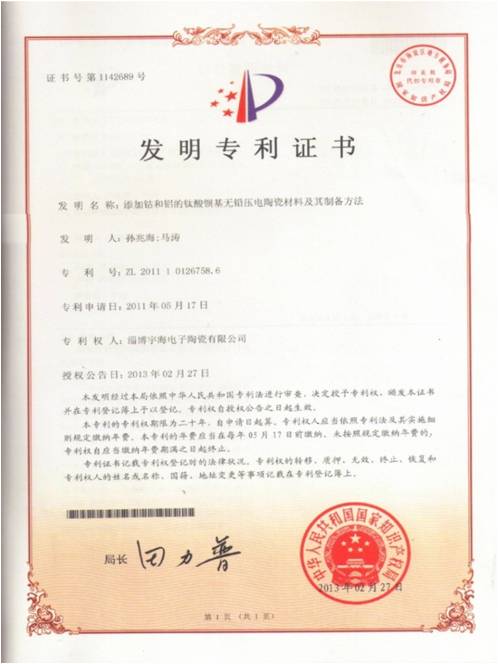Not long ago, Director of the Department of Equipment Industry, Ministry of Industry and Information Technology, Mr. Wei Weizhen, at the 2016 Automotive and Information Communication Integration Development Forum, said that the “Intelligent Networked Vehicle Development Technology Roadmap†research has been basically completed, and will be released to the industry in August, which marks China’s intelligence. The top-level design of the network car has taken a big step forward. The United States is one of the most advanced countries in the development of the world's intelligent network. This article will be taken by the smart car to see if the US government is planning to develop intelligent networked cars in the country. In the 21st century, with the rapid development of communication technology, information technology and electronic technology, the United States will use the network-based car based on car-vehicle/vehicle-road communication as the core of the future transportation system, from the government, enterprises, research institutions and universities. At the level, a lot of research and application are carried out together. On October 11, 2011, the US Department of Transportation began to conduct research and test "Connected Vehicle Technology." On May 22, 2012, the latest research by the US Department of Transportation showed that the driver technology "interconnected vehicle technology" affirmed its potential for safety. As a result, the United States officially opened up the scale for network research and application deployment. prelude. Network-based vehicles based on vehicle-vehicle and vehicle-road communication have become the core technical means for the United States to solve the safety, mobility and environmental friendliness of transportation systems. Almost all of the projects currently being promoted by the US ITS Joint Project Office are related to network technology. The United States is conducting specific research and industrialization applications from multiple aspects such as security application research, mobile application research, policy research, networked automotive technology research, and networked vehicle demonstration application engineering. There are three aspects of the end, the demand side and the environment side. The specific projects are divided into five dimensions. First, security (1) Safety application based on vehicle-to-vehicle communication Reduce or mitigate 80% of light vehicle accidents through V2V communication technology; establish robust DSRC standards for safety applications; accelerate the development of vehicle V2V safety application technology. 1. Study the typical security application scenarios of V2V, and determine the functions, performance, and effectiveness indicators of the application. 2. Study V2V European compatibility, determine network security and / or infrastructure common needs 3. Develop safety income indicators 4. Develop prototypes of active security applications based on V2X, including front collisions, crossroad collisions, etc. 5. Research effective HMI technology 6. Research policy and legal and regulatory requirements 7. Develop and evaluate V2V safety applications for commercial vehicles, large trucks, and buses (II) Networked vehicle safety application test verification Gain empirical data on user acceptance, system effectiveness, and technology maturity; validate applications in real-world environments; build real-world environments for security, mobility, and environmental application development; and provide more research data for governments and industry. 1. Research equipment and integrated safety system specific requirements to ensure the consistency, security and message integrity of all types of vehicle communication standards 2. Verify the effectiveness of V2V and V2I through field testing of 3,000 networked vehicles 3. Analyze and evaluate the performance and advantages of technology and applications through test data (3) Safety application based on vehicle-road communication 1. Use car-road communication V2I wireless technology to reduce, reduce or prevent an additional 12% of accident scenarios (V2V technology can not be solved) 1. Technology to develop information that supports transmission between vehicles and infrastructure 2. Select, develop and evaluate security applications 3. Infrastructure planning and policy research Second, mobility (1) Research on data acquisition and management Research, develop and verify the acquisition and management of traffic information data; the first phase, from October 2009 to June 2011, the basic analysis; the second phase, from July 2011 to August 2014, research, development and testing; The third phase, from October 2015 to September 2017, pilot deployment and demonstration. 1. Stakeholder work collaboration plan 2. Joint research and development 3. Complete proof-of-concept testing and testing of standards, procedures, tools, and protocols 4. Data capture and management demonstration application 5. Indicators and methods for development evaluation 6: Share project survey results and processes with relevant stakeholders, and promote corresponding technologies by coordinating promotional activities and technologies (2) Dynamic mobile application research Manage and operate transportation systems based on the availability of new data sources and communication methods; establish an application data integration foundation to transform data into information, providing travellers and system operators with greater real-time access to traffic information systems, thereby Can make better decisions. 1. Stakeholder work collaboration plan 2. Project planning and coordination, including research foundations and development, institutional policies and standards 3. Application development, testing of standards, algorithms, tools and protocols 4. Centralized display and analysis 5. Share the findings and processes of this project with stakeholders Third, connected car policy and institutional research Ensure the successful and sustainable development of ITS; establish a security system, build a trust network among trusted users and appropriately preserve personal privacy; economic sustainable development strategy; coordinate different communication media to meet different communication needs; consumer-to-application and Acceptance of the process; compatibility of standards and certifications. 1.Information security policy for Vehicle-to-Vehicle (V2V) and Vehicle-to-Infrastructure (V2I) systems 2. Implementation analysis of V2V and V2I, including dynamic migration application (DMA), data capture and management (DCM), environment and applications (real-time information synthesis (AERIS)) 3. Communication analysis and spectrum policy 4. Interoperability and Standards Policy 5. Data access and use 6. Automation 7. Emerging features 8. Policy compatibility and compatibility with international standards Fourth, network communication vehicle technology research (1) Standard research Focusing on the automotive platform, developing and coordinating national standards and architectures, establishing a globally unified network of automotive standards; applying modern technology to provide a standardized need for vehicle and infrastructure construction to maximize safety and efficiency. 1. Revise and screen existing networked car standards 2. Update the above standards and test 3. Research and improve the quality of the standard to ensure the integrity and accuracy of the standard 4. Ensure coordination between standards, no contradiction 5. Design and train technicians to test according to these standards and establish standard test capabilities (2) Human factors research Apply advanced technology to provide early warning to drivers; control and reduce traffic accidents caused by driver distraction; evaluate driver behavior through common feature finding, experimental research and accident data analysis. 1. Study the distracting factors that cause drivers to be distracted and cause traffic accidents 2. Develop and evaluate performance indicators to mitigate driver distraction 3. Develop an integrated strategy that allows the driver to selectively pay attention to the hazard of the human-machine interface and reduce the driver's driving pressure. 4. Conduct long-term tests to develop early warning techniques for safe driving when drivers are distracted 5. Promote strategies to ensure that most people can accept (3) Core system Establish a trusted, secure data exchange system architecture 1. Solicit the requirements of the demander and establish the foundation of the core system 2. Evaluate core system concepts, system requirements, system architecture and verification tests 3. Conduct policy analysis to gain insight into the needs of establishing core systems and identify new issues 4. Develop the core system development plan through experimental results and policy analysis (4) Certification Work with industry to identify certification requirements, develop support testing methods and tools; develop a future plan and requirements to meet other possible requirements. 1.US DOT Opens the Symposium to Conduct Policy Research on Certification 2. Certification of technical issues such as equipment composition and human-machine interface requirements 3. Implement and supervise the certification process (5) Test site Continue to operate and manage the existing test site for testing by various agencies or private individuals; rebuild or upgrade the original experimental site as a model established in the future test site; develop and establish supporting operational requirements and management processes. 1. Establish test sites in multiple areas for testing 2. Establish an open test site for private testing 3. Reconstruct or upgrade the original experimental site as a model established in the future test site V. Networked Vehicle Demonstration Project Networked vehicle demonstration application project to verify the security and compatibility of network communication between vehicles, infrastructure and personal communication equipment; research pilot application integration and deployment, and test more than 20 networked automotive applications; stimulate the application of this technology And accepted by consumers; networked car cost-benefit assessment. 1. Vehicle safety, road safety, data, environment, road conditions and weather, mobility 2. Information Security Management and Certification 3. Networked automotive application development and test verification 4. Large-scale demonstration operation 5. Effect evaluation and impact analysis 6. Data demonstration application data After reading the top-level design of the American smart car, do you think that China has a long way to go? Lead Free Piezoelectric Elements
The Co-Al Co-doped Barium Titanate
Lead-free Piezoelectric Ceramics was successfully developed by Yuhai company
through repeated experiments. By Researching the influence of Co-Al Co-doping
on the structure and properties of Barium Titanate-based piezoelectric
ceramics, the formulation and preparation technology of Barium Titanate-based
piezoelectric ceramics were optimized. Yuhai`s BaTiO3 was prepared by conventional
solid-phase sintering method, with the piezoelectric constant d33 (>170pC/N),
dielectric loss tgδ≤0.5% and mechanical coupling coefficient Kp≥0.34.
Barium titanate lead-free piezoelectric
ceramics are important basic materials for the development of modern science
and technology, which was widely used in the manufacture of ultrasonic
transducers, underwater acoustic transducers, electroacoustic transducers,
ceramic filters, ceramic transformers, ceramic frequency discriminators, high
voltage generators, infrared detectors, surface acoustic wave devices,
electro-optic devices, ignition and detonation devices, and piezoelectric
gyroscope and so on.
Application: military, ocean, fishery, scientific research,
mine detection, daily life and other fields.
China Patent of Yuhai company`s BaTiO3
Chinese Patent No.: ZL 2011 1
0126758.6
Name: Lead-free Barium Titanate
Piezoelectric Material with Addition of Cobalt and Aluminum
Lead free piezo material BaTiO3
Lead-free Material
Properties
BaTiO3
Dielectric Constant
ɛTr3
1260
Coupling factor
KP
0.34
K31
0.196
K33
0.43
Kt
0.32
Piezoelectric coefficient
d31
10-12m/v
-60
d33
10-12m/v
160
g31
10-3vm/n
-5.4
g33
10-3vm/n
14.3
Frequency coefficients
Np
3180
N1
2280
N3
Nt
2675
Elastic compliance coefficient
Se11
10-12m2/n
8.4
Machanical quality factor
Qm
1200
Dielectric loss factor
Tg δ
%
0.5
Density
Ï
g/cm3
5.6
Curie Temperature
Tc
°C
115
Young's modulus
YE11
<109N/m3
119
Poison Ratio
0.33
Piezo Element,Piezo Ceramic Elements,Piezoelectric Ceramic,Pzt Tubes Zibo Yuhai Electronic Ceramic Co., Ltd. , https://www.yhpiezo.com

